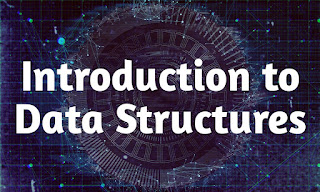A data structure is the concept which defines how the elements in a program are organised and the way how they can be related with each other is called Data Structures.
The basic Fundamental concepts of data structures follow as,
- Data
- Data Type
- Data Object
- Data Structure
- Abstract Data Type
Introduction to Data Structures

1. Data
As the term Data itself explains that, it is the information, whether it is a number or name, etc. We can perform various functions on data such as input, output and manipulation by computer.
Input: The information or data provided by the user using input devices such as keyboard. The input data provided by the user can be a string or number or character or even the combination of numbers and strings.
Manipulation: The data taken from input devices by user, the computer it further process the data and manipulate data. For example, if a user given addition of numbers (2+2) computer perform addition operation on input data.
Output: The manipulated or processed data can be shown by the output devices, that includes monitor or printer etc.
2. Data Type
Data Type as the term itself specifies that, it is a type of data and it can be Stored in variables. Data types can be divided into either built-in (basic) or user defined data types.
Built-in data types are the basic data types, which can be by default provided by the programming language. examples of basic data types are int, float and char are the basic data types.
User-defined data types is the another one, users can create their own data types and it is permitted by programming languages. These data types also known as User-defined data types.
Examples for these user-defined data types includes, class, union, structure. These are user defined data types.
3. Data Object
An Object, it contains data elements and it can be used to be later is known as data object. Data object can be categorised by set of variables, constants, attributes and files defined by the programmer.
4. Data Structure
The data structure depicts the representation of data and data objects. It is a group of atomic, composite data types or data structure with set of associations or relationships.
5. Abstract Data Type
Abstract Data type is divided into two types. One is Data Abstraction and another is Procedural abstraction.
Data abstraction it seperates the logical properties of data from presentation of data.
Procedural abstraction seperate the logical properties of data from implementation.
Abstract Data Type is the combination of both procedural abstraction and data abstraction.